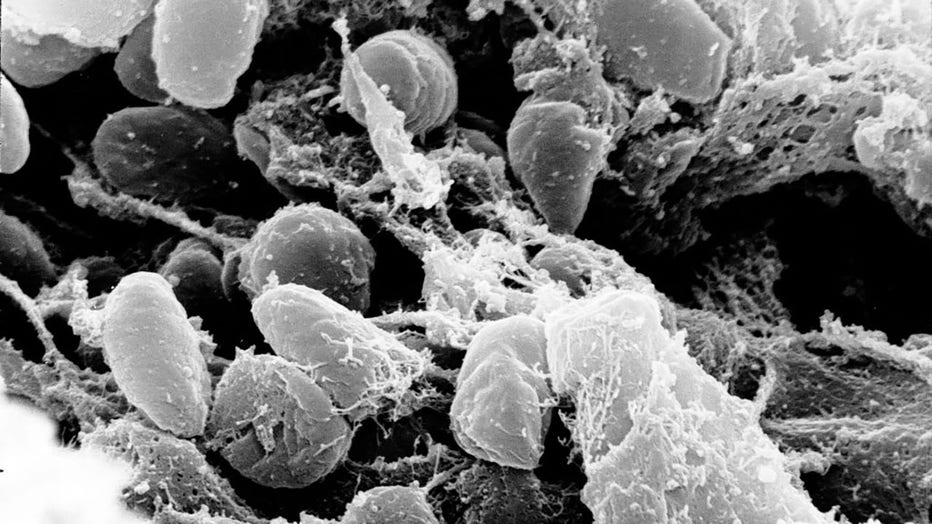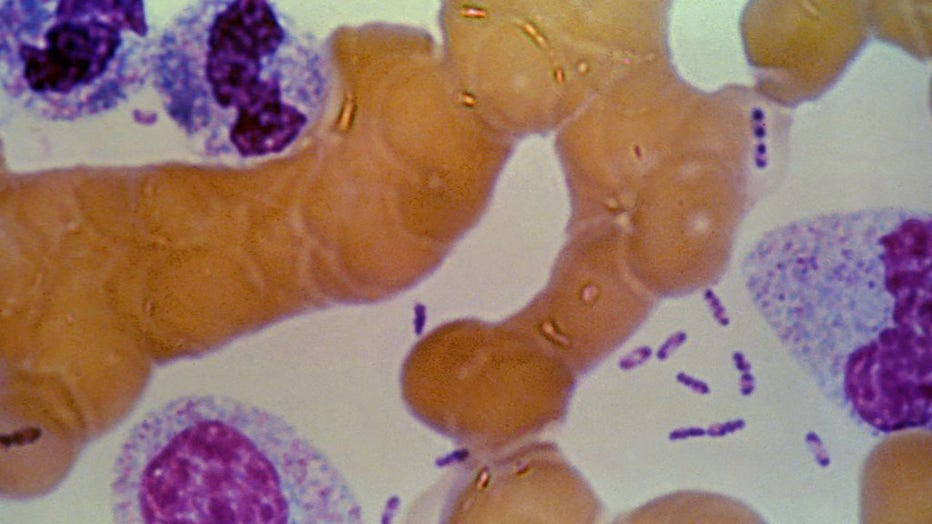Bubonic plague: What to know after Oregon cat gives owner rodent-borne disease

FILE - The White-throated Woodrat, Neotoma albigula, is a proven carrier of plague vector fleas, 1993. (Photo by Smith Collection/Gado/Getty Images).
A case of bubonic plague was reported earlier this week in Oregon by officials who said the resident likely got the disease from a sick pet cat.
Plague isn't common, but it also isn't unheard of in the western United States, according to the Associated Press. There are a handful of cases that occur in the region every year.
It’s different from Alaskapox, a rare, recently discovered disease that killed a man in Alaska last month.
Here are a few things people should know about bubonic plague, including who is at risk, how to recognize symptoms, seek out treatment and prevent infection in the first place.
Cat gives owner bubonic plague
The Oregon case in Deschutes County was announced on Feb. 10 by public health officials.
The infected resident in Oregon and the person's close contacts were all provided medication, state public health officials said. People in the community are not believed to be at risk, officials added.
Meanwhile, the cat was also treated but did not survive.
What is bubonic plague?

FILE - Scanning electron micrograph depicting a mass of Yersinia pestis bacteria (the cause of bubonic plague) in the foregut of the flea vector. (Photo by: IMAGE POINT FR/NIH/NIAID/BSIP/Universal Images Group via Getty Images)
Plague is an infectious disease that can affect mammals and is caused by the bacterium Yersinia pestis, which is carried by rodents and fleas. Sunlight and drying can kill plague bacteria on surfaces, according to the U.S. Centers for Disease Control and Prevention.
Humans and pets suspected to be sick with plague are typically treated with antibiotics, and sometimes with other medical measures.
There are three forms of plague:
- Bubonic plague — the kind contracted by the Oregon resident — happens when the plague bacteria gets into the lymph nodes. It can cause fever, headache, weakness and painful, swollen lymph nodes. It usually happens from the bite of an infected flea, according to the CDC.
- Septicemic plague symptoms happen if the bacteria gets into the bloodstream, according to the CDC. It can occur initially or after bubonic plague goes untreated. This form of plague causes the same fever, chills and weakness, as well as abdominal pain, shock and sometimes other symptoms like bleeding into the skin and blackened fingers, toes or the nose. The CDC says this form comes from flea bites or from handling an infected animal.
- Pneumonic plague is the most serious form of the disease, and it occurs when the bacteria gets into the lungs. Pneumonic plague adds rapidly developing pneumonia to the list of plague symptoms. It is the only form of plague that can be spread from person to person by inhaling infectious droplets.
Does bubonic plague have a cure?

FILE - Dark stained bipolar ends of Yersinia pestis can be seen in this stain of blood from a plague victim, 1993. (Photo by Smith Collection/Gado/Getty Images).
All forms of plague – including bubonic plague – can be successfully treated with common antibiotics, according to the CDC.
People who seek treatment early have a better chance of a full recovery, the CDC says.
"Once a patient is diagnosed with suspected plague they should be hospitalized and, in the case of pneumonic plague, medically isolated," the agency states on its website.
"Laboratory tests should be done, including blood cultures for plague bacteria and microscopic examination of lymph node, blood, and sputum samples. Antibiotic treatment should begin as soon as possible after laboratory specimens are taken," the CDC adds.
Where does human plague occur?
In the U.S., an average of seven cases of human plague are reported each year, according to the CDC. About 80% of them are the bubonic form of the disease.
"Since its introduction 120 years ago, it has become endemic in ground squirrels and rodents in the rural Southwestern U.S.," Timothy Brewer, M.D., professor of medicine and epidemiology at UCLA, told FOX News Digital.
Though the plague has most recently been found in Oregon, most cases occur around the "Four Corners" area of the Southwest — the southwestern corner of Colorado, southeastern corner of Utah, northeastern corner of Arizona and northwestern corner of New Mexico — primarily between late spring and early fall.
A welder in central Oregon contracted it in 2012 when he pulled a rodent out of his choking cat's mouth in 2012 — he survived but lost his fingertips and toes to the disease.
A Colorado teen contracted a fatal case while hunting in 2015, and Colorado officials confirmed at least two cases last year — one of them fatal.
Worldwide, most human cases of plague in recent decades have occurred in people living in rural towns and villages in Africa, particularly in Madagascar and Congo, according to the Cleveland Clinic.

Couple dies of plague after eating raw marmot meat
A Mongolian couple died after contracting the bubonic plague from eating raw marmot meat, thought to be a folk remedy.
Am I at risk of plague?
People can reduce the risk of plague by keeping their homes and outdoor living areas less inviting for rodents by clearing brush and junk piles and keeping pet food inaccessible.
Ground squirrels, chipmunks and wood rats can carry plague as well as other rodents, and so people with bird and squirrel feeders may want to consider the risks if they live in areas with a plague outbreak.
Repellent with DEET can also help protect people from rodent fleas when camping or working outdoors, the CDC says.
Flea control products can help keep fleas from infecting household pets. If a pet gets sick, they should be taken to a vet as soon as possible, according to the CDC.
What caused the Black Death?

FILE - A group of Venetians dressed up like old doctors at the time when in Venice there was the plague celebrate the end of the Venice Carnival on Feb. 25, 2020 in Venice, Italy. (Photo by Giacomo Cosua/NurPhoto via Getty Images)
Historically, plague was responsible for widespread pandemics with many deaths.
In the 14th century, it was known as the "Black Death," killing up to half of the population as it spread through Europe, the Middle East and northern Africa. Between 1347 and 1351, it began ravaging communities in the Middle East and Europe, and significant outbreaks continued for roughly the next 400 years.
An earlier major plague pandemic, dubbed the Justinian plague, started in Rome around 541 and continued to erupt for the next couple hundred years.
The third major plague pandemic started in the Yunnan region of China in the mid-1800s and spread along trade routes, arriving in Hong Kong and Bombay about 40 years later. It eventually reached every continent except Antarctica, according to the Cleveland Clinic, and is estimated to have killed roughly 12 million people in China and India alone.
In the late 1800s, an effective treatment with an antiserum was developed. That treatment was later replaced by even more effective antibiotics a few decades later.
Though plague remains a serious illness, antibiotic and supportive therapy is effective for even the most dangerous pneumonic form when patients are treated in time, according to the World Health Organization.
The Associated Press contributed to this report. It was reported from Cincinnati.

